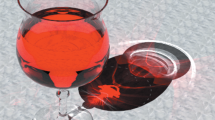Abstract
Cinematic volume rendering, which can obtain highly realistic rendering results, is considered to be the next-generation volume rendering technology. Cinematic volume rendering generally uses ray tracing algorithms to build a global illumination model for rendering. In the rendering process, the convergence speed of ray tracing is slow, and the physically-based global illumination model is computationally expensive. Moreover, when the rendered sampling interval is not very large, there are problems such as random noise in the rendered image. This paper proposes a Cinematic volume rendering algorithm based on photon mapping. Using the illumination model defined by the algorithm, the rendering quality can be guaranteed, and there is no random noise. The algorithm can support multi-light illumination while under the influence of multiple lights. It can effectively enhance the depth and shape of the region of interest perception. We have implemented a fast photon mapping system for medical imaging. We test the algorithm under GPU, the multi-light rendering results are realistic, and the interaction reaches the level of interactive frames.











Similar content being viewed by others
Data Availability
Visible Human Project data in the manuscript can be found at:(https://medicine.uiowa.edu/mri/facility-resources/images/visible-human-project-ct-datasets). All other data are available from the authors upon reasonable request.
References
Avro J, Kirk D (1990) Particle transport and image synthesis computer graphics. In: SIGGRAPH’90: Proceedings of 17th conference on computer graphics and interactive techniques, pp 63–66. https://doi.org/10.1145/97879.97886
Christensen P (2008) Point-based approximate color bleeding. Pixar Tech Notes 2(5):6
Comaniciu D, Engel K, Georgescu B, Mansi T (2016) Shaping the future through innovations: from medical imaging to precision medicine. Elsevier. https://doi.org/10.1016/j.media.2016.06.016
Dappa E, Higashigaito K, Fornaro J, Leschka S, Wildermuth S, Alkadhi H (2016) Cinematic rendering–an alternative to volume rendering for 3d computed tomography imaging. Insights Imaging 7(6):849–856. https://doi.org/10.1007/s13244-016-0518-1
Drebin RA, Carpenter L, Hanrahan P (1988) Volume rendering. ACM Siggraph Comput Graph 22(4):65–74. https://doi.org/10.1145/378456.378484
Hachisuka T, Ogaki S, Jensen HW (2008) Progressive photon mapping. In: ACM SIGGRAPH Asia 2008 papers, pp 1–8. https://doi.org/10.1145/1457515.1409083
Iglesias-Guitian JA, Mane PS, Moon B (2020) Real-time denoising of volumetric path tracing for direct volume rendering. IEEE Trans Vis Comput Graph:2734–2747. https://doi.org/10.1109/TVCG.2020.3037680
Jensen HW (1995) Importance driven path tracing using the photon map. In: Eurographics workshop on rendering techniques. Springer, pp 326–335. https://doi.org/10.1007/978-3-7091-9430-0_31
Khalil A, Faisal A, Ng S-C, Liew YM, Lai KW (2017) Mitral valve rigid registration using 2d echocardiography and cardiac computed tomography. In: 2017 International conference on applied system innovation (ICASI). IEEE, pp 629–632. https://doi.org/10.1109/ICASI.2017.7988504
Kroes T, Post FH, Botha CP (2012) Exposure render: an interactive photo-realistic volume rendering framework. PloS one 7(7):38586. https://doi.org/10.1371/journal.pone.0038586
Kwon K, Lee B-J, Shin B-S (2020) Reliable subsurface scattering for volume rendering in three-dimensional ultrasound imaging. Comput Biol Med 117:103608. https://doi.org/10.1016/j.compbiomed.2020.103608
Lafortune EP, Willems YD (1993) Bi-directional path tracing. https://doi.org/10.1007/978-4-431-68057-4_21
Mukunoki D, Takahashi D (2013) Using quadruple precision arithmetic to accelerate krylov subspace methods on gpus. In: International conference on parallel processing and applied mathematics. Springer, pp 632–642. https://doi.org/10.1007/978-3-642-55224-3_59
Salama CR (2007) Gpu-based monte-carlo volume raycasting. In: 15th Pacific conference on computer graphics and applications (PG’07). IEEE, pp 411–414. https://doi.org/10.1109/PG.2007.27
Veach E, Guibas L (1995) Bidirectional estimators for light transport. In: Photorealistic Rendering Techniques. Springer, pp 145–167. https://doi.org/10.1007/978-3-642-87825-1_11
Zhang Y, Ma K-L (2013) Lighting design for globally illuminated volume rendering. IEEE Trans Vis Comput Graph 19(12):2946–2955. https://doi.org/10.1109/TVCG.2013.172
Funding
No funding was received to assist with the preparation of this manuscript.
Author information
Authors and Affiliations
Corresponding author
Additional information
Publisher’s note
Springer Nature remains neutral with regard to jurisdictional claims in published maps and institutional affiliations.
Rights and permissions
Springer Nature or its licensor (e.g. a society or other partner) holds exclusive rights to this article under a publishing agreement with the author(s) or other rightsholder(s); author self-archiving of the accepted manuscript version of this article is solely governed by the terms of such publishing agreement and applicable law.
About this article
Cite this article
Yuan, Y., Yang, J., Sun, Q. et al. Cinematic volume rendering algorithm based on multiple lights photon mapping. Multimed Tools Appl 83, 5799–5812 (2024). https://doi.org/10.1007/s11042-023-15075-9
Received:
Revised:
Accepted:
Published:
Issue Date:
DOI: https://doi.org/10.1007/s11042-023-15075-9




